Don't miss the Alcázar, the Cathedral and the Giralda of Seville!
Visit the magical corners in a spectacular tour with the best guides in the city
Official guide promotion:
62,60€ 54,46€ pax
(Final price INCLUDING TICKETS)

Visit the magical corners in a spectacular tour with the best guides in the city
Official guide promotion:
62,60€ 54,46€ pax
(Final price INCLUDING TICKETS)



Official guide
in English

Priority access
skip the line

Best price
guaranteed
Cancellation and
100% refund
The Cathedral of Santa María de la Sede is like a great theme park of Christian history and art, full of singularities and legends. The Cathedral of Seville with an area of 11,520 square meters. It becomes the largest Gothic Cathedral in the world and the third in Christianity. Its cathedral enclosure, surrounded by chains, of 23,457 square meters, houses three portals, seven doors, a cloister, a free-standing bell tower, more than eighty stained glass windows, more than sixty vaults, more than fifty chapels and countless paintings, sculptures, altarpieces, domes, monuments, decorative arts and textiles, railings, goldsmithing, ecclesiastical objects, etc., which make up an essential catalog in the History of European Art.
By taking the mosque as the architectural basis of the Gothic enterprise, a rectangular hall plan resulted, which had some important consequences in its construction:
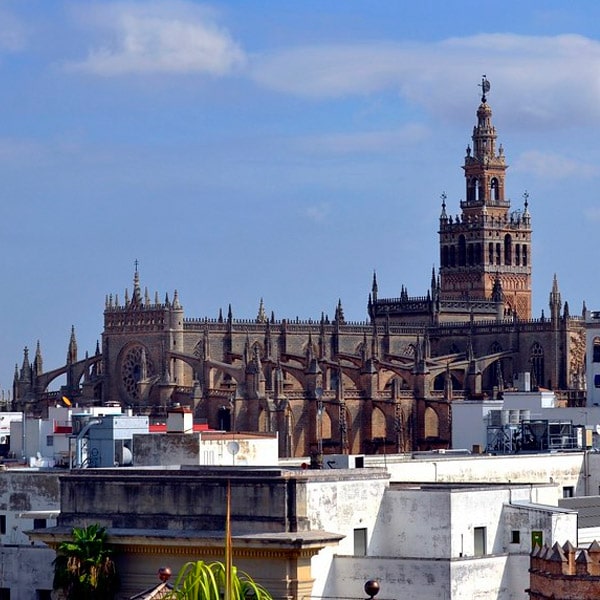
It is, by volume, the largest Gothic Cathedral in the world and the third largest in Christendom.
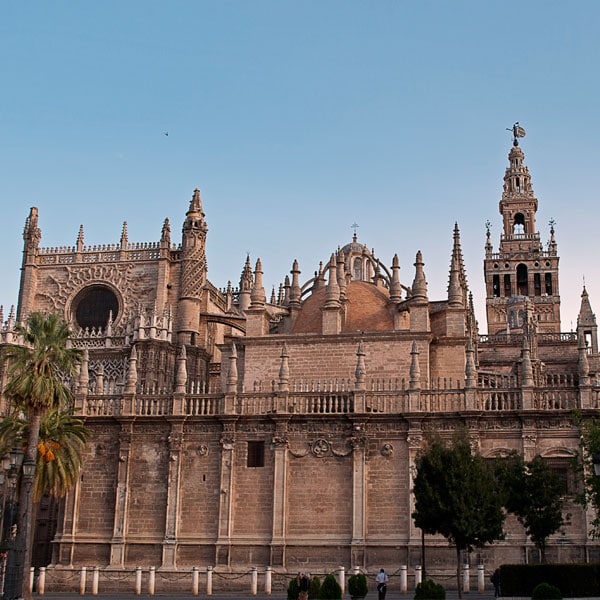
Due to the spaciousness of the floor plan, the predominant sensation is not verticality, as in most Gothic Cathedrals, but horizontal lines.
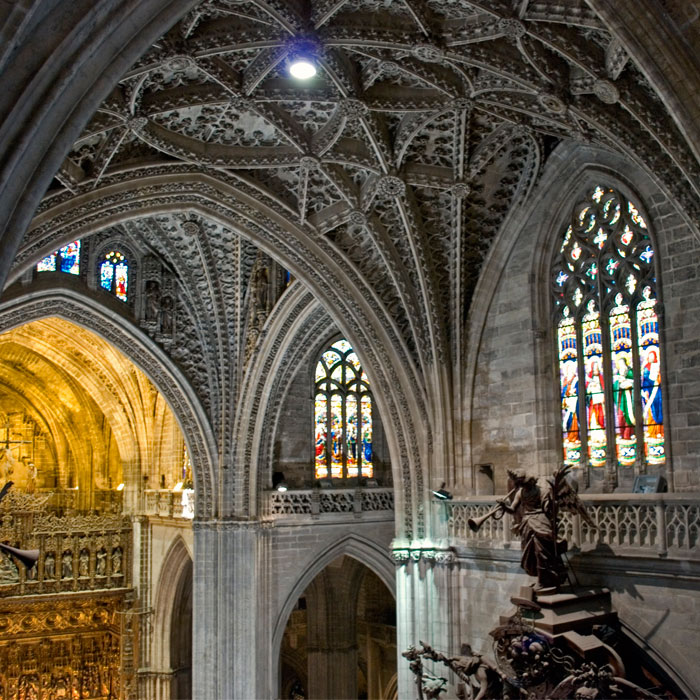
5 naves were built, a characteristic that only eight Gothic cathedrals meet in the world.
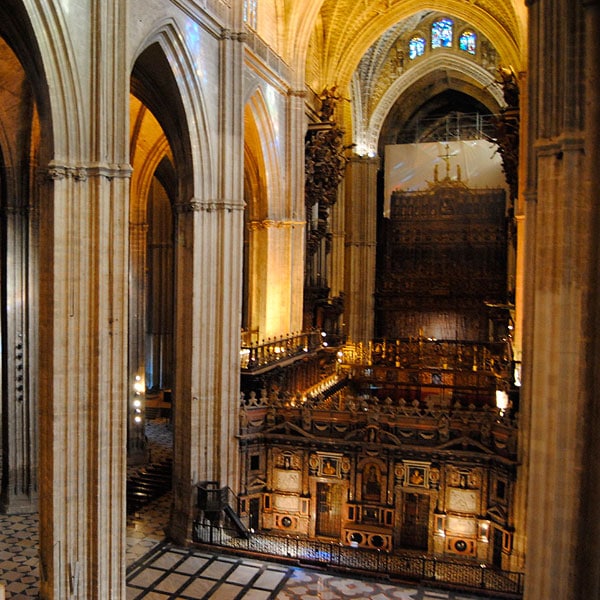
In the Cistercian way, a straight header was built, without an ambulatory, to which the Royal Chapel was later added.
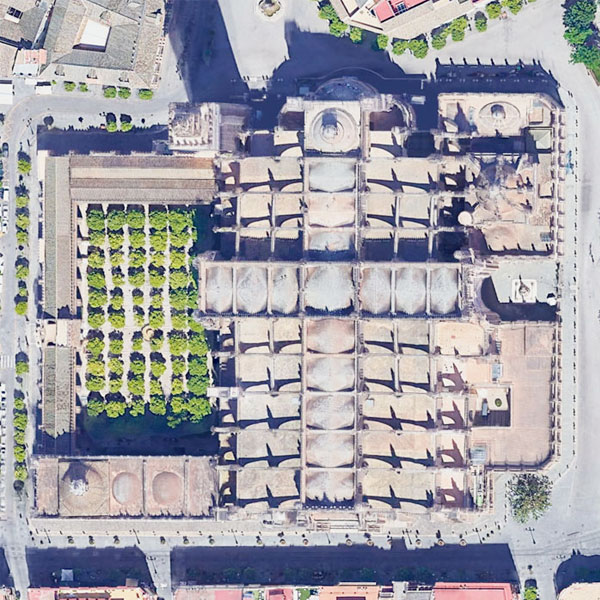
The Latin cross is not marked in plan, but the pillars of the central nave and the transept mark it in height.
Two important novelties should also be noted. On the one hand, the two doors that flank the apse, a fact that will influence the Cathedral of Mexico City. On the other hand, the appearance of a cantilevered balcony under the body of stained glass windows that replaces the triforium and that was used as a service gallery.
Due to the riches that the Cathedral Chapter was acquiring thanks to the monopoly of New Spain’s churches after the discovery of America and, despite the fact that Seville did not have a quarry, the Cathedral was built in stone with ashlars from twenty quarries, even reaching build two boats to bring stone down the Guadalquivir from the montains of San Cristóbal in Puerto de Santa María (Cádiz). Likewise, foreign construction professionals were hired to train specialized personnel.
With more than 500 years, it has undergone numerous interventions and restorations. At present, two fundamental interventions must be highlighted that will influence the future of the Cathedral, both at the beginning of the 21st century. The first is the strengthening of two pillars that were deteriorated and which consisted of replacing more than 500 ashlars, weighing about 250 kg each, without intervening in the central cores to maintain stability. And the second, the pedestrianization of the Avenida de la Constitución due to the pollution problems suffered by the temple.
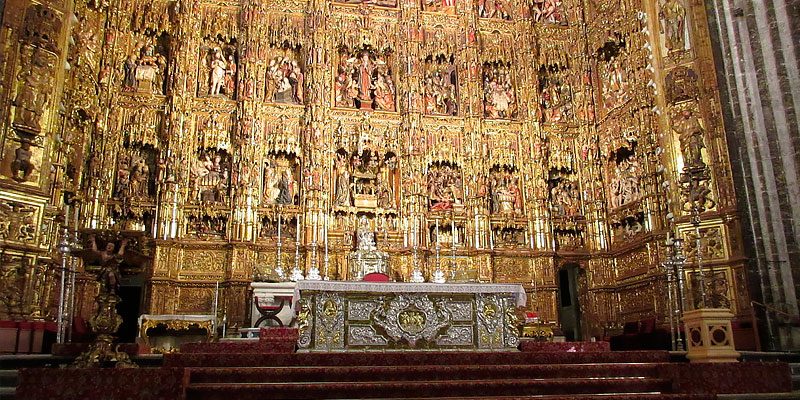
During this period, the most important construction company of the Cathedral is carried out, with the responsibility, as stated in the capitulary act, of carrying out a work “such and so good that there is no other equal”.
This is how the works began in 1434, apparently, under the original project of master Alonso Martínez, consecrating the temple in 1507, although some works had not been finished. However, in 2008 a document was discovered with the traces of the Cathedral that could attribute the project to the Flemish master Ysambart (Ysambarte, Ysambret…). For its construction, foreign master builders were hired, who, as senior masters of the Cathedral, collaborated with each other to maintain the uniformity of the project. The masters succeeded one another, even for some period several older masters working at the same time, among which Ysambart, Carlín, Juan Normant, Simón de Colonia or Alonso Rodríguez stand out. In 1511 part of the dome collapsed due to the collapse of one of the pillars and Alonso Rodríguez was dismissed, Juan Gil de Hontañón was hired to build a new dome, which was completed in 1519.
It is surprising to think that in only about 70 years the largest Gothic Cathedral in the world was completed.
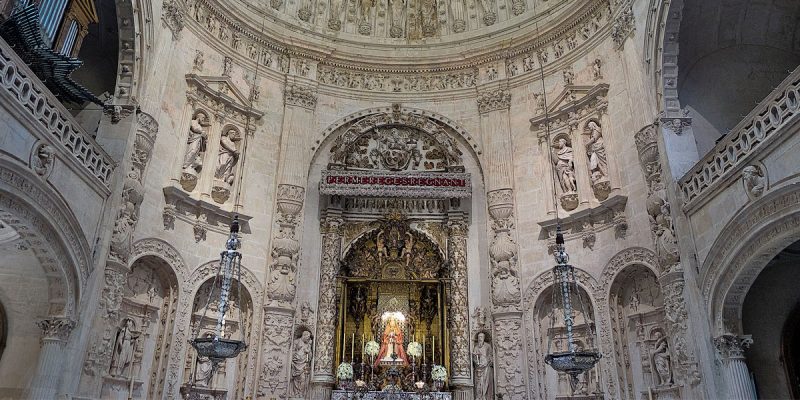
During this period a series of reforms and additions were made, in styles ranging from Plateresque to Mannerist. The Cathedral is considered to have been completed in 1593, including its dependencies. Among the most important of these extensions are:
– The Royal Chapel. Started by Martin de Gainza. Hernán Ruiz II, Pedro Díaz de Palacios and Sebastián van der Bosh took part in its construction, completed in 1574.
– The Main Sacristy. Finished by Martin de Gainza 1543, executing the design of Diego de Riaño.
– The Lobby of the Chapter House. Designed by Diego de Riaño and built by Martín de Gaínza in 1535, although the dome that Asensio de Maeda started in 1582 was not completed until 1592 by Juan de Minjares.
– The Chapter House. Conceived with an elliptical plan to cover the acoustic and visual needs of the meetings of the Cathedral Chapter. It was built by Hernán Ruiz II and finished by Asensio de Maeda in 1592.
– The Extension of the body of bells of the Giralda. Made by Hernán Ruiz II in 1565.
– The Sacristy of the Chalices and the Chapels of the Alabasters were also finished, among other spaces.
With the Cathedral completed, additions and decorative reforms of chapels, monuments and altars were made. At an architectural level, there is the construction of the Tabernacle Church, which, despite being connected to the Cathedral, is an independent Church. Alonso de Vandelvira, Cristóbal de Rojas and the main architect of the Cathedral, Miguel de Zumárraga, who finished it in 1662, took part in its mannerist design at the beginning of the 17th century.

This period falls within the Neoclassical style. In 1732 the Cabildo studied the possibility of expanding the secular dependencies of the Catedral of Seville. In 1760, under the direction of José Herrera, work began on various rooms in the southwestern area, in front of the Archivo de Indias and on the corner of Avenida de la Constitución, although they were not completed until well into the 20th century. It is what is now called the Office Pavilion.
In the second half of the 18th century, a series of buildings adjoining this area were demolished, linking the cathedral with the city’s farmhouses. Thus concluded the process of exempt monumentalization of the Cathedral.
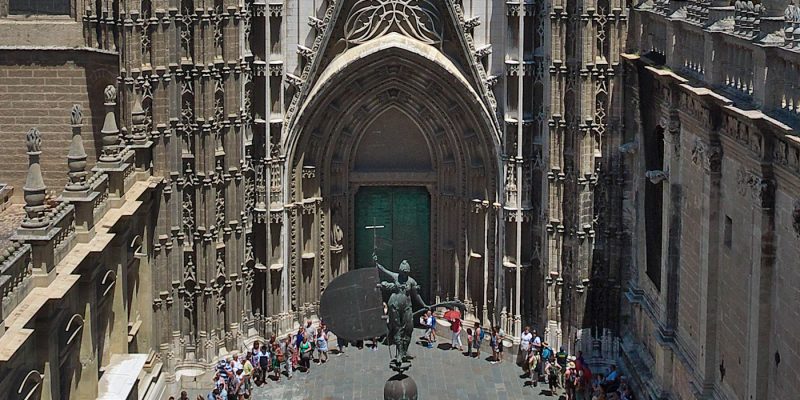
The most notable of this period, where some restorations and reforms were carried out, was the completion of the doors of the transept, that of the Concepción and that of San Cristóbal or del Príncipe, finished by Adolfo Fernández Casanova at the beginning of the 20th century, strictly following the nineteenth-century design of Demetrio de los Ríos.
Likewise, we must also highlight the reconstruction of the dome at the end of the 19th century, under the direction of Joaquín Fernández Ayarragaray and the completion of the Office Pavilion by Javier Luque in the 1920s.
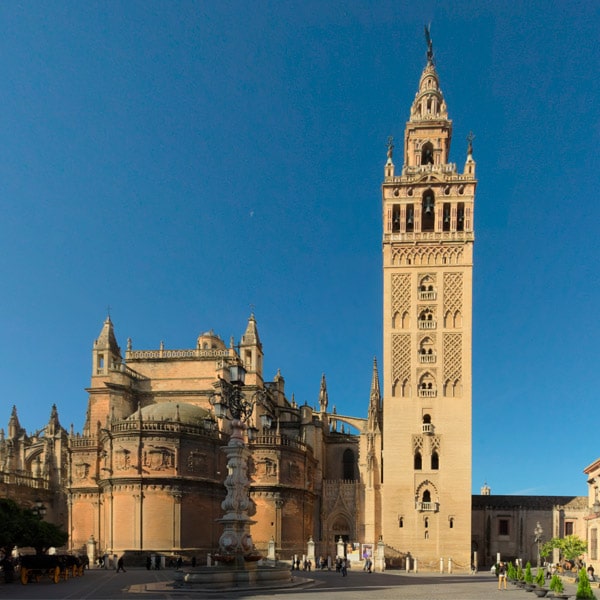
Some notable milestones of the 20th century and of what we have been in the 21st century are:
Visit its history, its doors, its altars and its works of art.
With our tour you will discover in detail one of the most beautiful places in the world.
With ten access doors and a rectangular floor plan, it is a model of the Cathedral that influenced many Novohispanic cathedrals after the conquest of the New World.
The Cathedral of Seville was created as an architectural madness, being the largest Gothic Cathedral in the world. Going through its interior, with our tours, is a real stimulus for the senses of any visitor.
Our tours will show the wealth of paintings, sculptures, stained glass windows, forging, goldsmithing, clothing, books, etc., that make Seville Cathedral one of the great museums in Europe and a historical-artistic compendium of Catholicism.
Choose the days and indicate the attendees
Discover the Royal Alcazar of Seville



Go up and discover the sky of the city of Seville


